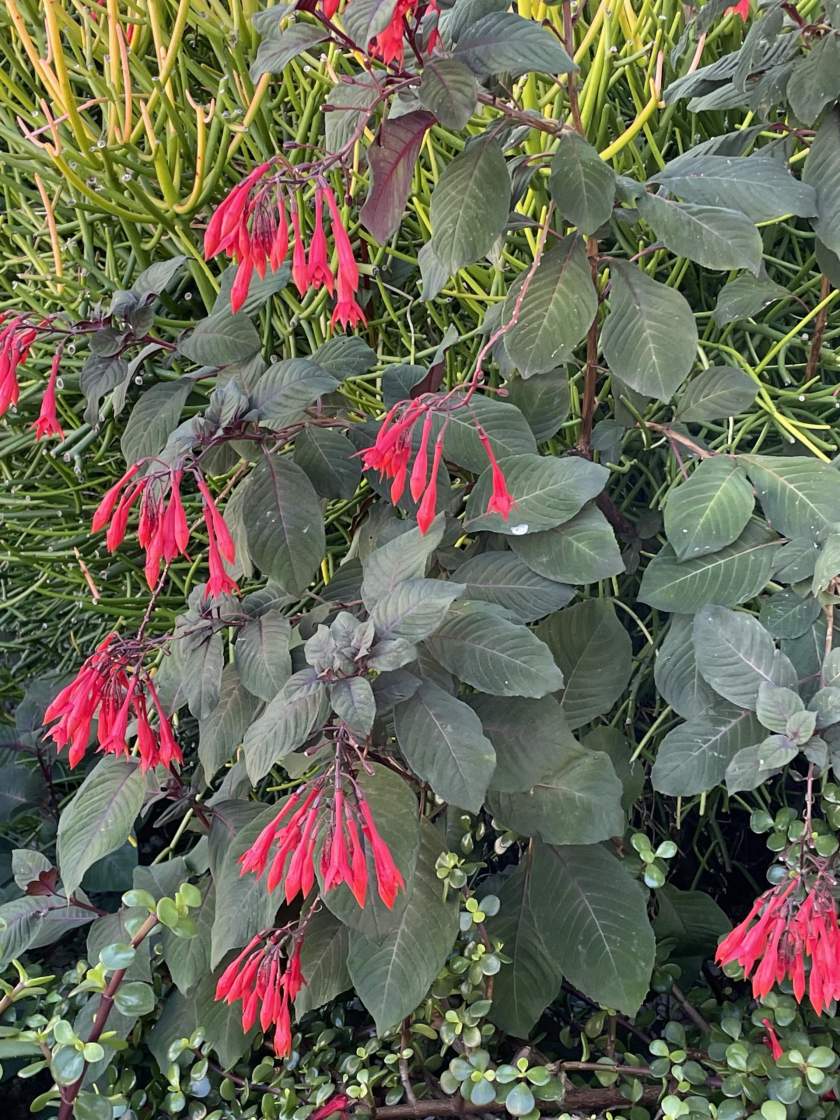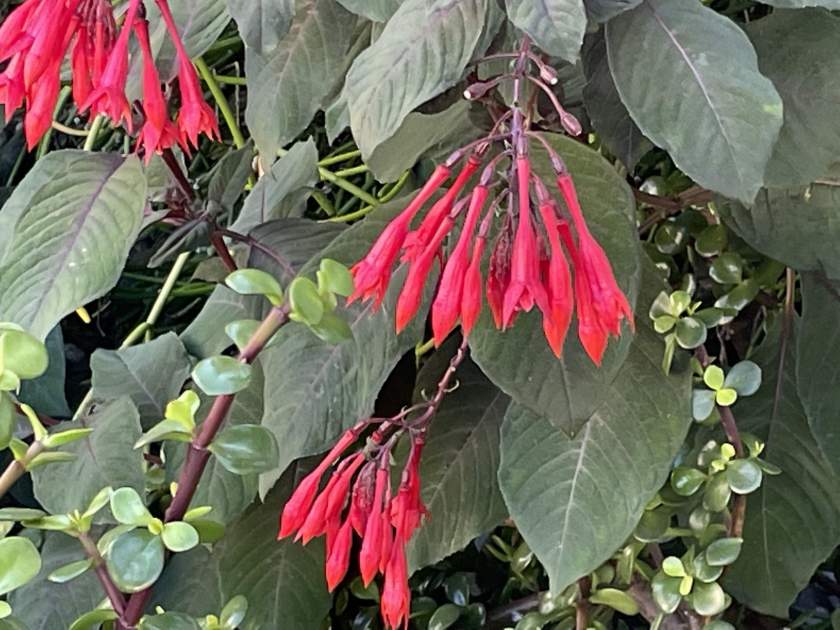Fuchsia boliviana Carrière, commonly known as Bolivian Fuchsia, is a small tree or shrub that typically grows between 2 to 6 meters in height. It is a bisexual plant that is densely covered in fine hairs. The plant is native to the southern regions of Peru, Bolivia, and northeastern Argentina, but it has also been naturalized in various tropical countries. Fuchsia boliviana Carrière belongs to the family Onagraceae, also known as the Willowherb Family or Evening Primrose Family. The Onagraceae family includes a wide range of flowering plants, including fuchsias and evening primroses.
Fuchsia boliviana characteristics:
The leaves of Fuchsia boliviana are opposite, elliptical-ovate, and measure between 5 to 20 centimeters in length and 3 to 15 centimeters in width. They are pointed or occasionally alternate near the tips of the branches. The base of the leaves can be acute or rounded, while the apex is acute to acuminate. The petioles, or leaf stalks, range from 1 to 7 centimeters in length.
The flowers of Fuchsia boliviana are bisexual and occur in clusters or terminal panicles that hang downwards. The rachis, or central axis of the flower cluster, measures between 5 to 30 centimeters in length (up to 60 centimeters in the fruit stage) and has lanceolate, reflexed bracts. The pedicels, which are the individual flower stalks, are 5 to 15 millimeters long. The floral tube is narrowly tubular-infundibuliform and ranges from 30 to 70 millimeters in length. The sepals, which are the outer parts of the flower, are lanceolate and measure 10 to 20 millimeters in length and 4 to 5 millimeters in width at the base.
The berries of Fuchsia boliviana are cylindrical in shape, measuring between 10 to 26 millimeters in length and 8 to 14 millimeters in width. They are dark purple in color and are edible.
Fuchsia boliviana is adapted to cold mountainous regions and is found at elevations ranging from 1000 to 2200 meters.

How to grow Fuchsia boliviana:
When it comes to growing Fuchsia boliviana, it is important to recreate its natural habitat conditions. It thrives in cool, mountainous regions, so it prefers a temperate climate. It can tolerate a range of soil types, but well-draining soil is recommended. The plant should be placed in a location that receives partial shade, especially during the hottest parts of the day.
Propagation of Fuchsia boliviana can be done through seeds or stem cuttings. If starting from seeds, they can be sown in a seed tray or pots filled with a well-draining potting mix. The seeds should be lightly covered with soil and kept moist until germination occurs. Stem cuttings can be taken from healthy, established plants and rooted in a suitable rooting medium.
Regular watering is necessary to keep the soil evenly moist but not waterlogged. Mulching around the base of the plant can help retain moisture and control weed growth. Fertilizing with a balanced, slow-release fertilizer can be beneficial for promoting healthy growth.
Pruning can be done to maintain the desired shape and size of the plant. It is generally recommended to prune Fuchsia boliviana in late winter or early spring before new growth starts.




